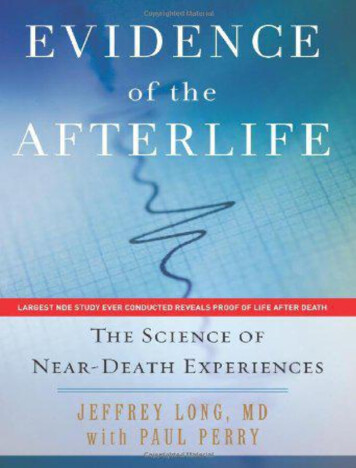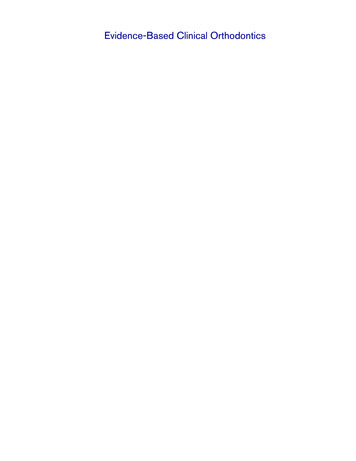
Transcription
Evidence-Based Clinical Orthodontics
Evidence-BasedClinical OrthodonticsEdited byPeter G. Miles, bdsc, mdsSenior LecturerDepartment of OrthodonticsUniversity of Queensland School of DentistryBrisbane, AustraliaVisiting LecturerGraduate Program in OrthodonticsSeton Hill University Center for OrthodonticsGreensburg, PennsylvaniaDaniel J. Rinchuse, dmd, ms, mds, phdProfessor and Associate DirectorGraduate Program in OrthodonticsSeton Hill University Center for OrthodonticsGreensburg, PennsylvaniaDonald J. Rinchuse, dmd, ms, mds, phdProfessor and Program DirectorGraduate Program in OrthodonticsSeton Hill University Center for OrthodonticsGreensburg, PennsylvaniaQuintessence Publishing Co, IncChicago, Berlin, Tokyo, London, Paris, Milan, Barcelona,Istanbul, Moscow, New Delhi, Prague, São Paulo, and Warsaw
DedicationThis book is dedicated to our families, teachers, mentors, students, and inparticular to our patients. More importantly, this book is dedicated to you,the reader, the present and future of orthodontics.Library of Congress Cataloging-in-Publication DataEvidence-based clinical orthodontics / edited by Peter G. Miles, Daniel J.Rinchuse, Donald J. Rinchuse.p. ; cm.Includes bibliographical references and index.ISBN 978-0-86715-564-8I. Miles, Peter G. II. Rinchuse, Daniel J. III. Rinchuse, Donald Joseph.[DNLM: 1. Malocclusion--therapy. 2. Dental Bonding. 3. Evidence-BasedDentistry. 4. Orthodontics--methods. WU 440]617.6’43--dc2320120174715 4 3 2 1 2012 Quintessence Publishing Co IncQuintessence Publishing Co Inc4350 Chandler DriveHanover Park, IL 60133www.quintpub.comAll rights reserved. This book or any part thereof may not be reproduced, stored in aretrieval system, or transmitted in any form or by any means, electronic, mechanical,photocopying, or otherwise, without prior written permission of the publisher.Editor: Leah HuffmanDesign: Ted PeredaProduction: Sue RobinsonPrinted in China
ContentsIn Memoriam viiForeword viiiPreface ixContributors x12345678Introduction: Evidence-Based Clinical Practice 1Nikolaos Pandis, Daniel J. Rinchuse, Donald J. Rinchuse, James NobleEarly Intervention: The Evidence For and Against 7Daniel J. Rinchuse, Peter G. MilesBonding and Adhesives in Orthodontics 17Peter G. Miles, Theodore Eliades, Nikolaos PandisWires Used in Orthodontic Practice 31William A. BrantleyClass II Malocclusions: Extraction and Nonextraction Treatment 47Peter G. Miles, Daniel J. RinchuseTreatment of Class III Malocclusions 61Peter Ngan, Timothy TremontSubdivisions: Treatment of Dental Midline Asymmetries 89Peter G. MilesEvidence-Based Use of Orthodontic TSADs 107James Noble
910111213The Effectiveness of Treatment Procedures for Displaced andImpacted Maxillary Canines 127Tiziano BaccettiOrthodontically Induced Inflammatory Root Resorption 137M. Ali Darendeliler, Lam L. ChengOrthodontics and TMD 157Donald J. Rinchuse, Sanjivan KandasamyOrthodontic Retention and Stability 167Daniel J. Rinchuse, Peter G. Miles, John J. SheridanAccelerated Orthodontic Tooth Movement 179Eric LiouIndex 201
In MemoriamDr Tiziano Baccetti (1966–2011)Chapter 9 of this book, “The Effectiveness of TreatmentProcedures for Displaced and Impacted Maxillary Canines,”was written by Dr Tiziano Baccetti. This may well havebeen his last scholarly work; he completed this chapterjust a few weeks before his untimely and tragic death onNovember 25, 2011, at the young age of 45. While posingfor a photograph on a historic bridge in Prague, CzechRepublic (he was the Keynote Speaker at the 9th International Orthodontic Symposium held November 24 to 26,2011), he slipped on old stonework at the base of one ofthe saintly statues that decorate the bridge and fell 8 meters to the rocks below. It was the Charles Bridge—PonteCarlo in Italian, the same name as Tizanio’s beloved father,who knows that bridge well and for whom the picture wasintended.Tiziano authored over 240 scientific articles on diverseorthodontic topics. He has been described by those whoknew him best as a “superman.” This is supported by whathe had accomplished in his short life. In 2011, Tizianogave the Salzmann Lecture at the 111th Annual AmericanAssociation of Orthodontists Session on “Dentofacial Orthopedics in Five Dimensions.” In concluding his presentation, he explained how his grandfather in Italy hadtold him as a young boy that one day he would “find hisAmerica” and fulfill his dreams. Tiziano said at the end ofhis lecture, “I have found my America, fulfilled my dreams.”Few, even with a long life, can say that they have fulfilledtheir dreams, their ambitions. We can be comforted thatTiziano did.We feel fortunate that we can share Tiziano’s excellentchapter with our readers.vii
ForewordThis text can serve as a reference guide for research andstudies in many difficult clinical areas where there is a lackof evidence-based information. The distinguished editorsare all involved in education, research, and practice, andthey have invited other well-known experts and authorities to critically evaluate the literature and topics suchas early treatment, extraction and nonextraction, ClassIII treatment, asymmetries, temporary skeletal anchoragedevices (miniscrews), impacted canines, root resorption,temporomandibular disorders, retention, stability, and accelerated orthodontic tooth movement. These are all critical areas in the full scope of clinical orthodontic practice.I am sure that every orthodontist will learn from the enormous contributions provided so clearly in this text. Thefirst chapter introduces and defines evidence-based clinical practice. Every other chapter provides evidence forand against each controversy and concludes with a summary and points to remember.The topics are covered in detail with extensive illustrations, cases, diagrams, and references. All discussions arebased on current research findings, and when evidence isnot available, it is clearly stated as such. As the editorspoint out, the purpose of this book is to provide the orthodontist with an evidence-based perspective on selectedimportant orthodontic topics and to stimulate practicingorthodontists to reflect on their current treatment protocols from an evidence-based view. In the future, clinicaldecisions should be based ideally on evidence rather thanpersonal opinion, and treatment strategies should be proven to be both efficacious and safe.I am very honored and privileged to have been askedto present this foreword because this text should be theevidence-based text for EVERY orthodontist and student.Robert L. Vanarsdall, Jr, ddsAssistant Dean for Advancement of Dental SpecialtiesProfessor, Department of OrthodonticsUniversity of Pennsylvaniaviii
PrefaceThe specialty of orthodontics has evolved from an apprenticeship to a learned profession requiring academic training.Nevertheless, many in our profession still cling to biasedbeliefs and opinions rather than embracing evidence-basedpractice. When evidence conflicts with what experiencehas taught, it becomes even more difficult for such practitioners to change their views. Hence, there is complacencyand resistance within the profession to adopt evidencebased treatments.Most orthodontists experience at least enough treatmentsuccess to support a practice. Yet treatment success doesnot necessarily equate with treatment efficacy or even verification of an appropriate diagnosis. This success can bethe biggest obstacle to change. Clinical success may be associated with a multitude of appliances, strong belief in aparticular philosophy, financial motivations (even unethical ones such as inappropriate phase I treatments), the difficulties involved in switching from an experience-basedpractice to an evidence-based practice, and a simple lackof understanding of evidence-based clinical practice (described in chapter 1). In our profession, therefore, treatment efficacy is currently evaluated broadly in relation tobenefits, costs, risks, burden, and predictability of successwith various treatment options.No longer can the role of evidence-based decision making be shunned and ignored in favor of clinical experiencealone. From both ethical and legal perspectives, soundclinical judgment must be based on the best evidenceavailable. Today a paternalistic view, whereby the doctorknows what is best for the patient without soliciting patient input, is unacceptable. Patients have a right to autonomy and input into their treatment provided that itdoes no harm.The 2001 Institute of Medicine report estimated that ittakes an average of 17 years for new, effective medical research findings to become standard medical practice.1 Forexample, there was a reemergence of the use of self-ligatingbrackets in the mid-1990s amid claims not only of faster ligation but also of quicker and more comfortable treatment.Several prospective clinical trials began to be published in2005 and then two systematic reviews in 2010 concludedthat in fact there was no difference in discomfort or treatment time when self-ligating brackets were used comparedwith conventional brackets. Yet despite the weight of evidence, these claims of faster treatment times and less discomfort are still made and supported by many orthodontists. As Dr Lysle Johnston, Jr, pointed out, our specialtytends to have a pessimistic attitude toward evidence anda minimal capacity to judge its quality. But what effectdoes this pessimism have on our patients? Can we as anorthodontic profession really wait 17 years to incorporateemerging quality evidence into our clinical practices?With the exponential growth of information in today’sworld, how does the busy orthodontist evaluate evidencethat will affect his or her practice? This book was conceived out of a need for evidence regarding relevant clinical topics and ongoing controversies in orthodontics suchas early treatment, bonding protocols, treatment of ClassII and Class III malocclusions, asymmetries, impactedcanines, root resorption, retention, and accelerated toothmovement. We have done our best to incorporate the bestevidence available regarding these topics, and hopefullythis book will show you not only how to judge quality evidence but also why it is so important to implement it.Reference1. Institute of Medicine. Crossing the Quality Chasm: A New HealthSystem for the 21st Century. Washington, DC: National Academies Press, 2001.AcknowledgmentsThis book would not have been possible without the support of the publisher, Quintessence, and the tedious anddedicated work of our editor, Leah Huffman. We especiallywant to thank all of the contributing authors who have taken the time to write chapters in this book.ix
ContributorsTiziano Baccetti, DDS, PhD*Assistant ProfessorDepartment of OrthodonticsUniversity of FlorenceFlorence, ItalyTheodore Eliades, DDS, MS, Dr Med, PhDThomas M. Graber Visiting ScholarDepartment of Orthodontics and Pediatric DentistryUniversity of Michigan School of DentistryAnn Arbor, MichiganSanjivan Kandasamy, BDSc, BSc Dent, Doc ClinProfessor and DirectorDepartment of Orthodontics and Pediatric DentistryUniversity of ZurichZurich, SwitzerlandDent, MOrth RCS, MRACDSClinical Senior LecturerDepartment of OrthodonticsUniversity of Western AustraliaPerth, AustraliaWilliam A. Brantley, PhDProfessor and DirectorGraduate Program in Dental Materials ScienceDivision of Restorative, Prosthetic, and Primary CareDentistryCollege of DentistryThe Ohio State UniversityColumbus, OhioAdjunct Assistant ProfessorDepartment of OrthodonticsUniversity of Saint LouisSt Louis, MissouriEric Liou, DDSDirectorDepartment of Orthodontics and Craniofacial DentistryChang Gung Memorial HospitalTaipei, TaiwanLam L. Cheng, BDSc, MDSc, MOrth RCS (ED),MRACD (Ortho)Honorary Associate ProfessorDepartment of OrthodonticsFaculty of DentistryThe University of SydneySydney, AustraliaProgram DirectorDepartment of OrthodonticsGraduate School of Craniofacial MedicineChang Gung UniversityTaoyuang, TaiwanM. Ali Darendeliler, BDS, PhD, Dip Orth, Certif Orth,Priv Doc, MRACD (Ortho)Professor and ChairDepartment of OrthodonticsFaculty of DentistryThe University of SydneySydney, Australia*Deceased.x
Peter G. Miles, BDSc, MDSSenior LecturerDepartment of OrthodonticsUniversity of Queensland School of DentistryBrisbane, AustraliaNikolaos Pandis, DDS, MS, Dr med dent, MScPrivate practiceCorfu, GreeceDaniel J. Rinchuse, DMD, MS, MDS, PhDProfessor and Associate DirectorGraduate Program in OrthodonticsSeton Hill University Center for OrthodonticsGreensburg, PennsylvaniaVisiting LecturerGraduate Program in OrthodonticsSeton Hill University Center for OrthodonticsGreensburg, PennsylvaniaDonald J. Rinchuse, DMD, MS, MDS, PhDProfessor and Program DirectorGraduate Program in OrthodonticsSeton Hill University Center for OrthodonticsGreensburg, PennsylvaniaPrivate practiceCaloundra, AustraliaPeter Ngan, DMDProfessor and ChairDepartment of OrthodonticsWest Virginia University School of DentistryMorgantown, West VirginiaJohn J. Sheridan, DDS, MSDClinical Associate ProfessorSchool of OrthodonticsJacksonville UniversityJacksonville, FloridaJames Noble, BSc, DDS, MSc, FRCD(C)Visiting LecturerDivision of OrthodonticsUniversity of ManitobaWinnipeg, ManitobaCanadaTimothy Tremont, DMD, MSClinical Associate ProfessorDepartment of OrthodonticsWest Virginia University School of DentistryMorgantown, West VirginiaVisiting Clinical LecturerGraduate Program in OrthodonticsSeton Hill University Center for OrthodonticsGreensburg, PennsylvaniaPrivate practiceWhite Oak, Pennsylvaniaxi
Peter G. Milesbdsc, mdsTheodore Eliadesdds, ms, dr med, phdNikolaos Pandisdds, ms, dr med dent, msc3CHAPTERBonding and Adhesivesin OrthodonticsIntroductionstudies cannot predict the clinical behavior of the adhesives tested.5 Some of the limitations of in vitro studiesinclude that most in vitro studies are conducted withina short time after bonding (often within 24 hours), so thepotential influence of the oral environment on the bonding material cannot be taken into account. Thermocyclingcannot replicate the effects of bond degradation by saliva,and the loading rates are slow compared with chewing.Bond strength can also be affected clinically by pH andmicrobial degradation.6,7 In a systematic review of bondstudies, many factors were found to play a significant rolein the final bond strength measured in laboratory studies.8For example, water storage can decrease bond strength byan average 10.7 MPa, each second of curing time with ahalogen light can increase bond strength by 0.077 MPa,and each millimeter per minute of greater crosshead speedof the Instron machine increases bond strength by 1.3 MPa.The authors of the review concluded that many in vitrostudies fail to report test conditions that could significantly affect the outcome.8Some clinicians will judge or select an adhesive froma laboratory study based on its mean or median bondstrength without also considering the variation. For example, Fig 3-1 shows two curves representing bond strengthsin MPa for two adhesives, both having the same meanbond strength of 13 MPa, which is considered adequatefor the orthodontic bonding of brackets. However, if wepick an arbitrary bond strength of about 8 MPa, as suggested by Reynolds9 as the minimum (6 to 8 MPa) requiredbond strength to survive clinically, we can see that theadhesive represented by the blue curve has substantiallyfewer brackets that could potentially fail compared withthe adhesive represented by the pink curve. For these reasons, even a well-controlled, statistically valid laboratorystudy of bond strength should merely serve as a precursor to a controlled clinical investigation. It is importantfor the clinician to realize that most bond strength tests areTreatment efficiency in orthodontics relies on several factors, including accurate bracket positioning and effectivebonding of brackets to the enamel. The advent of directbonding of orthodontic attachments to the etched enamelsurface as first described by Newman1 was a major advancein orthodontic treatment. He described a technique using40% phosphoric acid for 60 seconds, and this techniqueremained basically unchanged for another 25 years. Shorter etch times were later examined in clinical trials, and nosignificant difference in bond failure rates were found between 60-second and 15-second etch times.2,3 Hence, overtime we have seen a reduction in practitioner acid etchtimes from 60 seconds in 1986 to an average of 30 seconds by 1996, which has remained the same up to 2008.4Despite this reduction in etch times, the reported averagebond failure in orthodontic offices has remained at 5%;however, this data comes from a survey,4 so it may wellunderestimate the true breakage rate. Bracket debondingduring treatment is inconvenient and costly to both the orthodontist and the patient. In our own practices, our goalis to have as low a bond failure risk as possible, so it ispreferable to be 5% or lower. As demonstrated in Table3-1, a practice with an average of 250 case starts per yearand an average treatment time of 24 months can save 4 repairs per day (or 776 per year) if the bond failure risk canbe reduced from 10% to 2%.So what steps should we take and what information canwe gather from the literature to help us in such a basicskill as the bonding of orthodontic brackets? Some maychoose to base their choice of adhesive or primer on themyriad of laboratory studies that have been published overthe years. However, there are a number of problems withthis approach. The American Dental Association Councilon Dental Materials reported that most laboratory bonding17
CHAP T E R 5Class II Malocclusions: Extraction and Nonextraction TreatmentAnchorage lossFig 5-1 Plotting normal curves based on the average and standarddeviation data from Heo et al.8 Note that a sizeable proportion of thetwo-step cases moved slower than the en-masse cases (shaded areaunder the pink two-step curve). En-masse space closure saved anaverage 4.8 months (0.4 years) of treatment time with no noticeabledifference in anchorage loss.En-masseTwo-step0123YearsabdefgichFig 5-2 (a to j) This patient had mild spacing inthe maxillary arch that would not be expected torequire “round tripping,” so en-masse spaceclosure has been selected. However, the man dibular arch exhibits crowding, with the mandib ular right central in cisor blocked out andshowing signs of inade quate attached gingivaand a potential for gin gival recession. For thisreason, two-step canine retraction is used in themandibular arch to “unravel” the crowding whilereducing the risk of proclining the mandibularright incisor.j48
Extraction TreatmentFig 5-3 The width of the bracket determines the size of the momentarm (one-half the bracket width) and the contact angle between thewire and the bracket corner. The wider bracket thereby requires lessforce to generate the moment necessary to upright the root. (Adaptedfrom Proffit.13)Moment armContactangleWhen sliding mechanics are used, a wider bracket has asmaller contact angle and requires less force to generatethe moment during space closure (Fig 5-3). Conversely,single wing and narrow brackets, including some selfligating bracket designs, potentially require more forceor demonstrate a greater resistance to sliding because ofthe greater contact angle and smaller moment arm. Thisis supported by two clinical trials evaluating the rate ofmaxillary canine retraction and en-masse space closure.15,16Both studies found a conventional twin bracket resultedin a slightly faster rate of space closure (1.2 mm/month)compared with the slightly narrower self-ligating brackets(1.1 mm/month and 0.9 mm/month).the spaces were 0.9 years (1 standard deviation 0.6 to1.3 years) in the en-masse group versus 1.3 years (1 standard deviation 0.6 to 2.0 years) in the two-step retraction group (Fig 5-1). Two-step retraction demonstrated nobenefit in terms of anchorage loss and a tendency to takelonger than en-masse retraction. No difference in anchorage loss was also found in a pilot randomized controlledtrial (RCT) comparing en-masse retraction with two-stepretraction.9 Therefore, en-masse retraction is the treatmentof choice for efficiency. However, there are individual cases in which initial sectional canine retraction or a trappedcoil on a continuous archwire is preferred to alleviate anterior crowding (Fig 5-2), such as when not “unraveling”the crowded anterior teeth first would “round trip” themand possibly create periodontal concerns. This treatmentphilosophy is supported by Burstone,10 who argued thatseparating the retraction of canines from that of the incisors makes little sense because all six teeth can be retracted at once with relatively low forces; the only patients forwhom separate canine retraction is appropriate, he continued, are those with anterior crowding as a result of archlength problems. With the trend toward longer treatmenttimes with two-step retraction, there may be an associatedrisk of greater root resorption. However, in a clinical trialinvestigating this, no clinically or statistically significantdifference could be found.11Some believe that tipping mechanics during canineretraction may be more efficient than bodily retraction.However, a split-mouth study in 14 subjects found thatbodily retraction was faster than tipping because of lesstime spent uprighting the roots, with anchorage losssimilar in both groups (17% to 20% or 1.2 to 1.4 mm).12The authors also found that the use of a Nance button didnot provide absolute anchorage. A previous study hadfound no difference in the rate of canine retraction but didnot measure tipping or time spent uprighting.13 The splitmouth study also recorded a greater anchorage loss withthe tipping mechanics. Another option when retractingcanines is to use either a single wing or a twin (also calleda Siamese) bracket. The advantage of a wider bracket inthis situation is that it allows better tip control becauseit is easier to generate the required moments needed tobring the roots parallel to one another at extraction sites.14AnchorageAs previously described, it appears from the best evidenceavailable that there is no advantage to two-step retractionover en-masse retraction when it comes to anchorage.However, there are other options available for reinforcinganchorage, such as transpalatal arches (TPAs), headgear,and, more recently, temporary skeletal anchorage devices(TSADs) or miniscrews. When examining the effect of theTPA during extraction treatment, Zablocki et al17 found nosignificant effect on either the anteroposterior or verticalposition of the maxillary first molars. In a study comparingTPAs, headgears, and TSADs, the TSADs and headgearshelped to control anchorage during leveling and alignmentwhile the TPA group experienced anchorage loss (meanof 1.0 mm; P .001).18 However, during the space closurephase, only the TSAD group was stable. Overall, the anchorage loss per incisor retraction was 2% for the TSADgroup, 15% for the headgear group, and 54% for the TPAgroup. A potential confounder in this study was that compliance with headgear wear was not measured, so compliance was assumed when molars remained stable and noncompliance suspected when they were not, representingwhat would happen clinically. Other authors found a similar 1.2-mm anchorage saving with 1.4 mm greater retraction of the anterior teeth when using skeletal anchorage(miniplates, miniscrews, or microscrews),19 while othershave found palatal implants to be at least as effective as49
CHAP T E R 6aeTreatment of Class III MalocclusionsbcfdghiFig 6-4 (a to j) An 8-year-old boy presentedwith an anterior crossbite and a maxillary trans verse deficiency. Green outlines indicate optimaltooth positions within the jaws.j64
Early Orthodontic TreatmentklmnopqrsFig 6-4 (cont) (k to s) Treatment with a Hyrax expander and fixed appliances.Early Orthodontic TreatmentMaxillary expansion and partial fixedappliancesIndicationsFigure 6-4 shows a patient who presented with an anteriorcrossbite and a maxillary transverse deficiency. Associatedwith the transverse discrepancy is inadequate arch lengthfor the unerupted maxillary lateral incisors. This particu lar patient had a near optimal anteroposterior positioningof the maxilla and mandible, as indicated by the relation ship of the optimal incisors to the GALL (Fig 6-4j). Thepanoramic radiograph (Fig 6-4h) showed that the lateralincisors were ready to erupt but were blocked out of thearch. The primary first molars had minimal root resorptionand, along with the permanent first molars, provided goodanchor units for rapid maxillary expansion (RME).A Hyrax expander was inserted, and brackets were bond ed to the central incisors and primary canines (maxillarypremolar brackets were used on the primary canines) (Figs6-4k to 6-4m). Skeletal expansion was accomplished withtwo turns per day for 10 days. The expander was tied off,and a 0.012-inch nickel-titanium (Ni-Ti) wire was insertedfrom the right primary first molar through the right canine,central incisors, left canine, and left primary first molar.Six weeks later, a 0.018-inch Ni-Ti wire was inserted, and aNi-Ti open coil was compressed between the incisors andthe primary canines (Figs 6-4n to 6-4p). The archwire wascinched distal to the primary first molar brackets to directObjectives of early Class III treatment may include (1)preventing progressive hard or soft tissue damage, suchas enamel abrasion and bony or gingival dehiscence; (2)improving skeletal discrepancies and possibly avoidingorthognathic surgery; (3) improving occlusal function; (4)developing arch length; and (5) improving dental and fa cial esthetics.17 Common conditions warranting early treat ment are anterior or posterior crossbites with or withoutfunctional shifts and blocked-out maxillary lateral inci sors. Favorable factors for successful early treatment in clude mild to moderate skeletal disharmony, no familialmandibular prognathism, a convergent facial type, sym metric condylar growth, and expected good cooperation.Patients and parents should be informed that unpredict able dysplastic skeletal growth in the future may necessi tate orthognathic surgery despite early intervention.Borrie and Bearn18 published a systematic review of 45articles to identify the appropriate method for anteriorcross bite correction. The authors found low-level evidence,and no statistical methods were employed for the analysis.They stated that higher-level studies are necessary beforedefinitive conclusions can be made.65
CHAP T E R 7Subdivisions: Treatment of Dental Midline AsymmetriesabcdefFig 7-10 (a to d) The maxillary right first molar required extraction, so miniscrew anchorage was used to protract the second molar into its place. Thiswas done prior to placement of full fixed appliances to reduce the overall time in full braces. (e and f) The second molar has taken the place of themaxillary right first molar, and the third molar erupted and aligned to replace the second molar.abcdefgFig 7-11 (a to q) Inappropriate extraction of themaxillary right first premolar as a child resulted ina midline shift and Class III canine relationship.Space was reopened in the less visible secondpremolar position for implant and crown placement.h100
Other AsymmetriesOther Asymmetriesbraces were then placed to commence aligning the remaining teeth and permit root uprighting on the second molar.Use of the miniscrew maintained the canine relationship,thereby preventing an asymmetry from developing in thiscase.Inappropriate removal of a tooth can result in an asymmetry that was not originally present. The patient in Fig7-11 had a blocked-out maxillary right premolar removedas a child, which resulted in a reasonable alignment butalso created a Class III subdivision malocclusion with themaxillary midline skewed to the right side. In this case,treatment would involve either extraction of three otherteeth to match or the reopening of the space for prostheticreplacement, which was the option chosen by the patient.Asymmetries can also be created by the inappropriate extraction of teeth in crowded dentitions, by congenitallyabsent teeth or impacted teeth, or by the loss of teeth. Forexample, the patient in Fig 7-10 had an internally resorbing maxillary right first molar that required extraction. Because she had only minor crowding in a Class I occlusion,a nonextraction approach was preferred. After consultation with the family, miniscrews were placed to protractthe second molar into the first molar space. After 6 monthsand six visits, the extraction space was closed with nomovement of the anterior teeth (Figs 7-10c and 7-10d). FullijklmnopqFig 7-11 (cont)101
CHAPTER 13 Accelerated Orthodontic Tooth MovementabcFig 13-2 (a to c) Schematic illustrations of maxillary rapid canine retraction through distraction of the PDL with an intraoral distraction device.Surgical-Assisted Approachbone complex is transported distally inside of the extraction socket. On the tension side, it is a distraction of thePDL followed by osteogenesis and ossification.91Surgical-assisted accelerated orthodontic tooth movementis currently the most effective technique experimentallyand clinically in accelerating orthodontic tooth movement. This approach includes the techniques of rapidcanine retraction through distraction of the PDL,91–95 rapid canine retraction through distraction of the dentoalveolus,96–98 corticotomy-assisted rapid orthodontic toothmovement,99,100 and corticision.101Clinical and surgical proceduresBonding and banding are performed before extraction ofthe first premolars. The first molars and second premolarsare the anchor units. A triple tube is welded on the buccalside of the canine band and the molar band. No archwireor active appliance is placed on the anchor units beforeextraction, but a segment of Ni-Ti archwire is placed in theanterior teeth for the initial alignment and
MRACD (Ortho) Honorary Associate Professor Department of Orthodontics Faculty of Dentistry The University of Sydney Sydney, Australia M. Ali Darendeliler, BDS, PhD, Dip Orth, Certif Orth, Priv Doc, MRACD (Ortho) Professor and Chair Department of Orthodontics Faculty of Dentistry The University of Sydney Sydney, Australia Theodore Eliades, DDS .
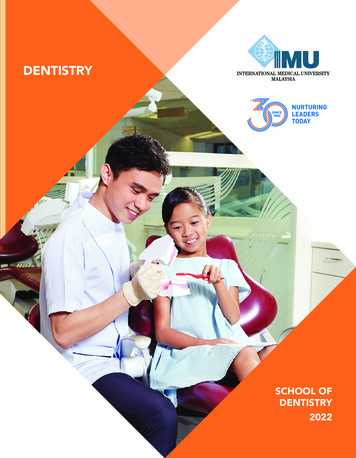
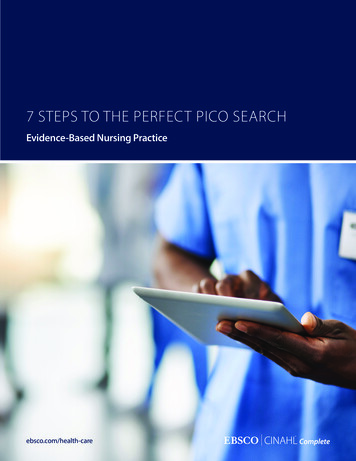

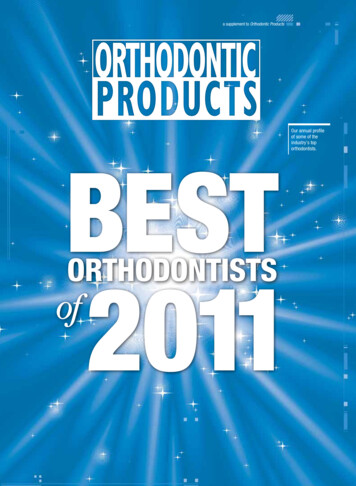
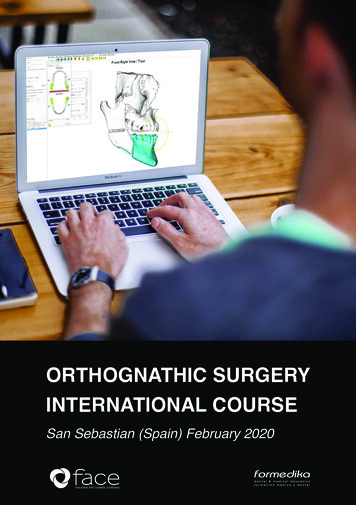
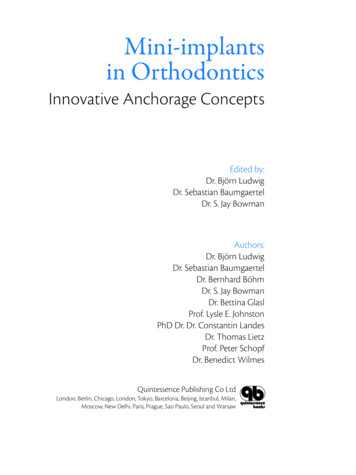

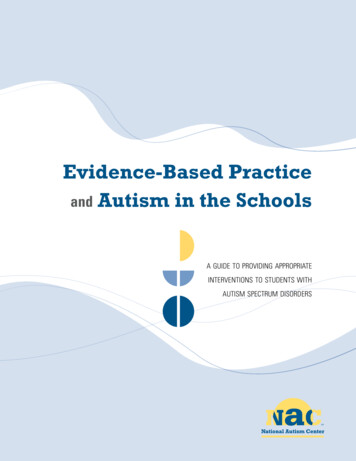
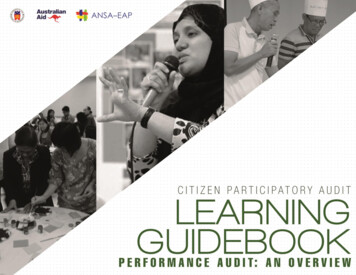
![project2 Encase.pptx [Read-Only]](/img/12/project2-encase.jpg)
